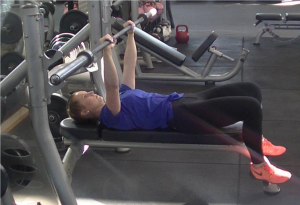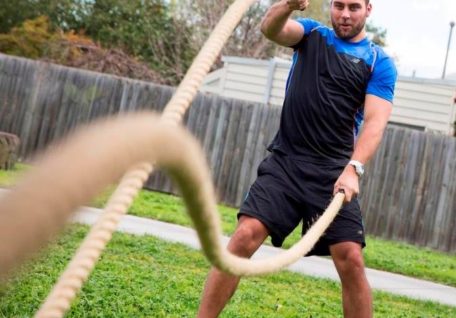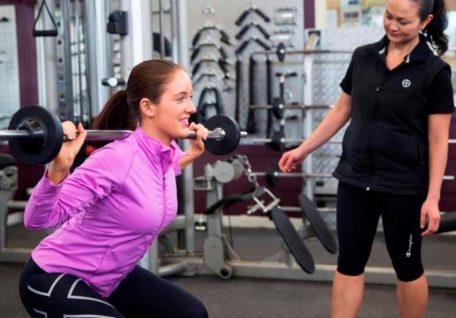The bench press is one of the most important upper body exercises. You can be forgiven for thinking it is a chest exercise, a lot of people do; however, it is so much more than that. It is a compound exercise, and that is because it recruits many muscles throughout the body.
It might not surprise you when you think about it, but the bench press actually works your triceps, shoulders, back, forearms and even your glutes to come extent.
Although from the outside it might seem simple, it is actually quite a complex movement with many people giving both good and bad advice. As with anything in the fitness industry, there are many mixed opinions, so it is always best to get your information from a reputable educator like ourselves, or a qualified Personal Trainer.
How to Bench Press
First, you will need to find your position on the bench. If you are using a bench press apparatus, this is much easier.
If you are using another method, you might need to move your bench forward and backwards to find a comfortable position where the resting bar is the correct height and in line with your eyes. The correct height of the bar is one you can lift and replace the bar easily. Too low is better than too high. Think elbows bent at a 90 degree angle, when the bar is racked (stationary).
Next, position body supine on the bench, which means to lie flat on the bench. Your eyes should be slightly in front of the bar, so the bar is more over your forehead than eyes, but only slightly.
Make sure your feet are on the ground. However, if the bench height leads to excessive lordosis, by this I mean the arch is too high, place your feet on the footrest as seen below:
You grip width on bar should be so forearms are parallel to each other when your elbows are slightly bent in the rest position. Grip position will and can vary widely—excuse the pun—depending on your height and goals. The longer your arms, the wider your grip will need to be.
In regards, to your hands, it is a good idea to grip tightly and with authority. You wrists may bend a little, but the straighter you can keep them the more force you will have to push the bar.
To begin the movement, lift the bar from the rack using as little energy as you can. Position the bar over your sternum.
Breathe in, then lower the weight under control towards the mid chest / nipple line, keeping forearms under the bar and elbows tracking slightly forward- 45 degrees to the body, to ensure you are recruiting more muscles. A common mistake is to take your elbows wide by pulling them directly parallel to the bar.
Once the bar is at its most lowered point, gently touch the bar on the chest and return to the starting position by pushing the bar upwards and slightly backwards. Breathe out in a controlled manner during the raising of the bar.
Once you have repeated your repetitions, which can vary depending on your goals, and whether you have someone to spot you, return the bar to the rack.
In Summary
- Position body supine on bench, eyes slightly in front of the bar and feet on the ground UNLESS bench height leads to excessive lordosis
- Grip width on bar should be so forearms are parallel to each other
- To begin position bar being over somewhere between the chin and sternum and stabilise scapulae
- Lower the weight under control towards the mid chest / nipple line, keeping forearms under the bar and elbows tracking slightly forward
- Gently touch the bar on the chest and return to starting position by pushing the bar upwards and slightly backwards
Common errors and mistake with the Barbell Bench Press
As mentioned at the start of the post, there are many conflicting arguments into correct technique. Here are some things that are common errors with beginners, and often people who’ve been lifting for years incorrectly.
- Bar too far down the body at start or during movement
- Elbows flare out to side, shoulders hunch up during movement
- Head or buttocks come off bench
- Grip is too narrow / wide on the bar
- Lower back arches too much*
*Arching of the back
The arching of your back in the bench press is a contentious point throughout the fitness industry. If you are reading this article, I will assume you are not a professional powerlifter and therefore probably do not have the core strength required in this movement to protect the spine. In which case it is safer to lift with a minimal to no arch in the back.
If there is an arch, that arch should remain in the same position throughout your movement, using your scapulae, gluteus and feet as anchor points.







